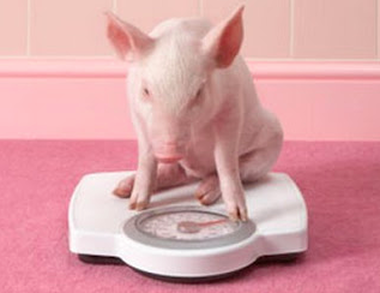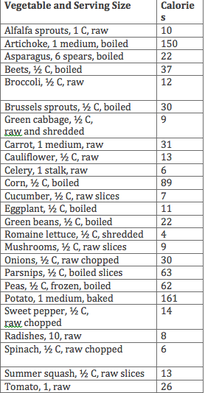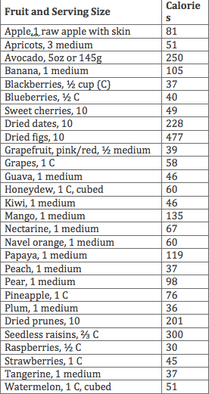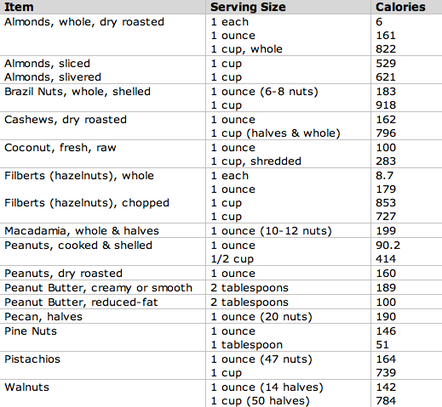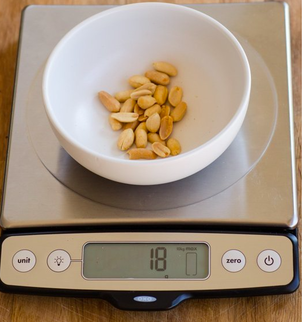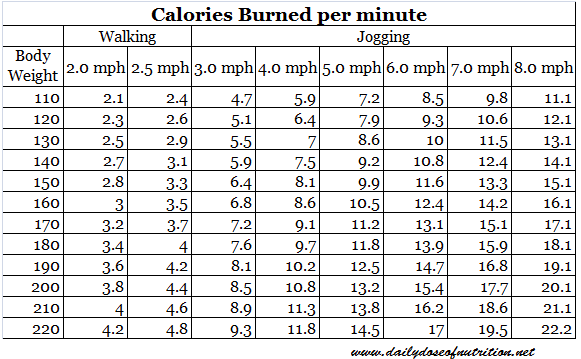There's how many calories in that?!?
Diet is always a huge discussion when it comes to our pigs and the reason for that is that pigs are prone to obesity. Pigs do not have the capability to turn off their hunger and say “I’m FULL” so humans are the ones that have control over that. It is very important for the development and also the long term life of your pig to have a well balanced diet. During developmental stages having the proper vitamins, nutrients, and all around diet helps in bone and muscle growth while a continued well balance diet helps to ward off health problems such as obesity, arthritis, blindness, and heart disease.
Keeping in mind our standard mini pig food has a full amount of daily calories, it is important to add veggies, fruits, and snacks to your pigs diet. Now, keeping that in mind MODERATION is key to almost everything. Incase you don’t know fruits and starchy items will turn into sugars and should be even more limited than veggies. The best saying is any green veggie goes. What is recommended for feeding is 1/4 cup 2 x day with an nice added salad mid day up to 25 lbs. Once your pig hits 25lbs it should then be 2% of your pigs daily weight in pellets split between two feedings and a nice healthy salad. Every pig is different and the pig scale should be used as a guideline however this is a MINIMUM for feeding. I see a lot of suggestions posted in the groups when people ask for feeding suggestions such as “oatmeal, juice, yogurt, apple sauce” etc and although all good suggestions to help your pig aid in crossing the line between adult hood, picky pig hood, and stubborn pig they should not be used as a every day tool.
Take feeding “warm oatmeal” before bed time as the perfect example. While this may be a great TREAT for your pet relying on this as a bed time routine can lead to a lot of problems. Oatmeal is a very starchy food which turns to sugar. Eating this right before bed leads to the starch turning into sugar while sleeping and extra added calories, not to mention the dependency that your pig has developed for the nightly routine. It is very important to monitor your pigs feed and again MODERATION is key on everything. Check out our nutrition section on the website to see healthy foods suggested for your pig(s) by clicking this link. And if you're unsure whether or not your pig is a healthy size, please check out this link to additional resources about healthy versus unhealthy pigs. The amount of calories should balance out with activity levels, excess calories will turn into excess weight. If you have a super active pig, your pigs caloric needs will be greater than a pig who doesn't walk around during the day or lays around sunbathing instead of rooting and playing. If you are noticing excess weight gain, it could be as simple as cutting back portions to get this under control.
Below is a list of common foods that are often fed to our pigs and their calorie count. I personally was very surprised by several of the calorie counts and often think to myself well I never though a handful of this or that would be bad when in actuality that is 150 calories a handful. Be mindful of what you feed your pig. You usually don’t feed your kid a fast food diet so why would you feed your pigs a fast food diet as well?
Foods
Oatmeal - 1 cup cooked - 150 - calories
1 cup uncooked - 300 calories
Apple - 116 calories
Apple Juice - 1 cup - 120 calories
Apple Sauce - 1 cup - 70 calories
Yogurt (plain) - 1 cup - 150 calories
Spinach - 1 cup - 7 calories
Broccoli - 1 cup - 30 calories
Cheerios - 1 cup - 100 calories
Strawberries - 1 cup - 50 calories
Banana - 1 whole - 105 calories
Iceburg lettuce - 1 cup - 0 calories
Romaine lettuce - 1 cup - 7 calories
Cucumber - 1/2 cup - 8 calories
Carrots - 1 cup - 50 calories
Almonds - 24 count - 164 calories
Peanuts - 1 cup - 856 calories
Single nut - 6 calories
Sunflower Seeds - 1 cup - 752 calories
Popcorn - 1 cup - 30 calories
Coconut Oil - 1 tbsp - 120 calories
Zucchini - 1 cup - 20 calories
Sweet potato - med - 103 calories
Celery - 1 stalk - 6 calories
Kale - 1 cup - 33 calories
Green beans - 1/2 cup - 20 calories
Corn - 1 cup - 124 calories
Cabbage - 1 cup - 22 calories
Watermelon - 1 cup - 45 calories
Cauliflower - 1 cup - 25 calories
Grapes - 1 oz- 20 calories
Milk - 2% 1 cup - 122 calories
Pumpkin - 1 cup - 30 calories
Pumpkin seeds - 1 tbsp - 56 calories
Walnuts - 7 nuts - 183 calories
Pecans - 10 nuts - 98 calories
Egg- S/1.3oz (raw) 54 calories
XL/2oz (raw) 108 calories
Peanut Butter- 2 teaspoons- 188 calories
This is a link where you can calculate the amount of calories for practically any food. Great resource for you if you are attempting to control the weight for your pig.
http://www.calorieking.com/foods/
Keeping in mind our standard mini pig food has a full amount of daily calories, it is important to add veggies, fruits, and snacks to your pigs diet. Now, keeping that in mind MODERATION is key to almost everything. Incase you don’t know fruits and starchy items will turn into sugars and should be even more limited than veggies. The best saying is any green veggie goes. What is recommended for feeding is 1/4 cup 2 x day with an nice added salad mid day up to 25 lbs. Once your pig hits 25lbs it should then be 2% of your pigs daily weight in pellets split between two feedings and a nice healthy salad. Every pig is different and the pig scale should be used as a guideline however this is a MINIMUM for feeding. I see a lot of suggestions posted in the groups when people ask for feeding suggestions such as “oatmeal, juice, yogurt, apple sauce” etc and although all good suggestions to help your pig aid in crossing the line between adult hood, picky pig hood, and stubborn pig they should not be used as a every day tool.
Take feeding “warm oatmeal” before bed time as the perfect example. While this may be a great TREAT for your pet relying on this as a bed time routine can lead to a lot of problems. Oatmeal is a very starchy food which turns to sugar. Eating this right before bed leads to the starch turning into sugar while sleeping and extra added calories, not to mention the dependency that your pig has developed for the nightly routine. It is very important to monitor your pigs feed and again MODERATION is key on everything. Check out our nutrition section on the website to see healthy foods suggested for your pig(s) by clicking this link. And if you're unsure whether or not your pig is a healthy size, please check out this link to additional resources about healthy versus unhealthy pigs. The amount of calories should balance out with activity levels, excess calories will turn into excess weight. If you have a super active pig, your pigs caloric needs will be greater than a pig who doesn't walk around during the day or lays around sunbathing instead of rooting and playing. If you are noticing excess weight gain, it could be as simple as cutting back portions to get this under control.
Below is a list of common foods that are often fed to our pigs and their calorie count. I personally was very surprised by several of the calorie counts and often think to myself well I never though a handful of this or that would be bad when in actuality that is 150 calories a handful. Be mindful of what you feed your pig. You usually don’t feed your kid a fast food diet so why would you feed your pigs a fast food diet as well?
Foods
Oatmeal - 1 cup cooked - 150 - calories
1 cup uncooked - 300 calories
Apple - 116 calories
Apple Juice - 1 cup - 120 calories
Apple Sauce - 1 cup - 70 calories
Yogurt (plain) - 1 cup - 150 calories
Spinach - 1 cup - 7 calories
Broccoli - 1 cup - 30 calories
Cheerios - 1 cup - 100 calories
Strawberries - 1 cup - 50 calories
Banana - 1 whole - 105 calories
Iceburg lettuce - 1 cup - 0 calories
Romaine lettuce - 1 cup - 7 calories
Cucumber - 1/2 cup - 8 calories
Carrots - 1 cup - 50 calories
Almonds - 24 count - 164 calories
Peanuts - 1 cup - 856 calories
Single nut - 6 calories
Sunflower Seeds - 1 cup - 752 calories
Popcorn - 1 cup - 30 calories
Coconut Oil - 1 tbsp - 120 calories
Zucchini - 1 cup - 20 calories
Sweet potato - med - 103 calories
Celery - 1 stalk - 6 calories
Kale - 1 cup - 33 calories
Green beans - 1/2 cup - 20 calories
Corn - 1 cup - 124 calories
Cabbage - 1 cup - 22 calories
Watermelon - 1 cup - 45 calories
Cauliflower - 1 cup - 25 calories
Grapes - 1 oz- 20 calories
Milk - 2% 1 cup - 122 calories
Pumpkin - 1 cup - 30 calories
Pumpkin seeds - 1 tbsp - 56 calories
Walnuts - 7 nuts - 183 calories
Pecans - 10 nuts - 98 calories
Egg- S/1.3oz (raw) 54 calories
XL/2oz (raw) 108 calories
Peanut Butter- 2 teaspoons- 188 calories
This is a link where you can calculate the amount of calories for practically any food. Great resource for you if you are attempting to control the weight for your pig.
http://www.calorieking.com/foods/
Nuts are must!
Here is why and how....
Nuts and seeds are rich in energy and nutrients. Nuts nutrition loaded with excellent source of monounsaturated-fatty acids (MUF) such as oleic and palmitoleic acids, which help to lower LDL or "bad cholesterol" and increase HDL or "good cholesterol." Research studies suggest that a diet that is rich in nuts can prevent coronary artery disease, strokes by favoring healthy blood lipid profile.
~They are rich source of all important omega-3 essential fatty acids like Linoleic acid, a-Linolenic acid (ALA), Eicosapentaenoic acid, Docosahexonic acid, etc. Research studies have suggested that fats by their virtue of anti-inflammatory action help to lower the risk of blood pressure, coronary artery disease, strokes and breast, colon and prostate cancers. Omega-3 fatty acids also offer some benefits in conditions such as rheumatoid arthritis and in cases of Schizophrenia, depression and Alzheimer’s disease.
~Nuts and seeds are the storehouse of health benefiting poly-phenolic flavonoid antioxidants such as carotenes, resveratrol, lutein, cryptoxanthin, etc. These compounds have been found to offer protection against cancers, heart disease, degenerative nerve disease, and viral/fungal infections. Studies suggests that resveratrol in peanuts reduces stroke risk by alterating molecular mechanisms in the blood vessels, reducing their susceptibility to vascular damage through decreased activity of angiotensin (a systemic hormone causing blood vessel constriction that would elevate blood pressure) and increased production of the vasodilator hormone, nitric oxide.
~Nuts nutrition is complete in the sense that in addition to calories, and vitamins, they are rich source of minerals like manganese, potassium, calcium, iron, magnesium, zinc, fluoride and selenium. Manganese is a co-factor for the enzyme superoxide dismutase, which is a very powerful free radical scavenger. Potassium is an important component of cell and body fluids that helps controlling heart rate and blood pressure. Copper is required for the production of red blood cells. Iron is required for red blood cell formation. Fluoride is a component of bones and teeth and plays important role in prevention of dental caries.
~They contain very good levels of vitamin-E, a powerful lipid soluble antioxidant. Vitamin E is required for maintaining the integrity of cell membrane of mucus membranes and skin; thus, protecting it from harmful oxygen-free radicals.
~Nuts nutrition provides many vital B-complex groups of vitamins such as riboflavin, niacin, thiamin, pantothenic acid, vitamin B-6, and folates. These vitamins are essential for optimum health and well-being.
Here is why and how....
Nuts and seeds are rich in energy and nutrients. Nuts nutrition loaded with excellent source of monounsaturated-fatty acids (MUF) such as oleic and palmitoleic acids, which help to lower LDL or "bad cholesterol" and increase HDL or "good cholesterol." Research studies suggest that a diet that is rich in nuts can prevent coronary artery disease, strokes by favoring healthy blood lipid profile.
~They are rich source of all important omega-3 essential fatty acids like Linoleic acid, a-Linolenic acid (ALA), Eicosapentaenoic acid, Docosahexonic acid, etc. Research studies have suggested that fats by their virtue of anti-inflammatory action help to lower the risk of blood pressure, coronary artery disease, strokes and breast, colon and prostate cancers. Omega-3 fatty acids also offer some benefits in conditions such as rheumatoid arthritis and in cases of Schizophrenia, depression and Alzheimer’s disease.
~Nuts and seeds are the storehouse of health benefiting poly-phenolic flavonoid antioxidants such as carotenes, resveratrol, lutein, cryptoxanthin, etc. These compounds have been found to offer protection against cancers, heart disease, degenerative nerve disease, and viral/fungal infections. Studies suggests that resveratrol in peanuts reduces stroke risk by alterating molecular mechanisms in the blood vessels, reducing their susceptibility to vascular damage through decreased activity of angiotensin (a systemic hormone causing blood vessel constriction that would elevate blood pressure) and increased production of the vasodilator hormone, nitric oxide.
~Nuts nutrition is complete in the sense that in addition to calories, and vitamins, they are rich source of minerals like manganese, potassium, calcium, iron, magnesium, zinc, fluoride and selenium. Manganese is a co-factor for the enzyme superoxide dismutase, which is a very powerful free radical scavenger. Potassium is an important component of cell and body fluids that helps controlling heart rate and blood pressure. Copper is required for the production of red blood cells. Iron is required for red blood cell formation. Fluoride is a component of bones and teeth and plays important role in prevention of dental caries.
~They contain very good levels of vitamin-E, a powerful lipid soluble antioxidant. Vitamin E is required for maintaining the integrity of cell membrane of mucus membranes and skin; thus, protecting it from harmful oxygen-free radicals.
~Nuts nutrition provides many vital B-complex groups of vitamins such as riboflavin, niacin, thiamin, pantothenic acid, vitamin B-6, and folates. These vitamins are essential for optimum health and well-being.
What are empty calories?
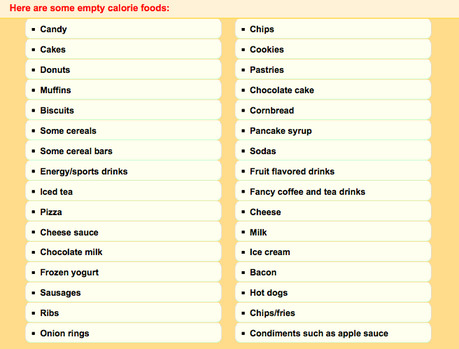 Not a complete list
Not a complete list
Empty calories are found in solid fats and added sugars. These are components of foods that add calories but have minimal, or non-existent nutritional value. In other words, they do absolutely nothing for you in terms of goodness or nutritional value.
If you think about it from a health perspective, if consuming calories is unavoidable, then it makes sense to make a conscious effort to go for those which provide you with nutrients, than those that don't right?
The problem is that most people do not take this into consideration, and the result is that the average person's pig consumes far too many empty calories than they should.
- See more at: http://www.calories-in-foods.com/what-are-empty-calories
If you think about it from a health perspective, if consuming calories is unavoidable, then it makes sense to make a conscious effort to go for those which provide you with nutrients, than those that don't right?
The problem is that most people do not take this into consideration, and the result is that the average person's pig consumes far too many empty calories than they should.
- See more at: http://www.calories-in-foods.com/what-are-empty-calories
How do I measure food in % of weight? I use a volume measurement like cups?
You can easily convert 1-2% of your pigs weight to a number. This will represent the total number of pounds of food PER DAY that needs to be divided into meals to determine how many "pounds" of food your pig needs. In order to calculate this, you will need a kitchen scale to weigh the food you wish to give your pig. The example below is 100 calories of peanuts. The weight is 18 grams, or about 2 teaspoons. 18 grams is about 0.6 ounces which is less than 0.0001 pound. You can simply measure in pounds to eliminate the need to covert to several different units in order to find pounds. But this is how you determine what is the ideal amount of food to feed your pig based on a weight percentage. ( Weight of 1 cup of pellets is approximately 1/2 pound, 2 cups of pelleted feed is approximately 1 pound.)
How do I determine the amount of calories my pig burns?
I think we can agree that most pigs are not equipped to do a total cardio workout. So, although the rooting likely burns significant calories, I can't find a scientific measurement to prove how many calories are actually burned. Here is a small chart to give you a general idea of how many calories are burned in people when doing the following exercises. Most pigs don't run for long periods of time, so at best, walking would likely be an accurate calorie burning exercise for them. As you can see, in a human chart, a slow walk doesn't burn many calories, so determining the caloric needs of your pig will be very individualized and will probably need frequent adjustment based on season or time spent outside or even age and current weight of your pig. Younger pigs are historically more active than older pigs, lighter pigs are typically more active than heavier pigs. Adjusting their diet to meet their needs can help your pig lose excess weight or even help that arthritic joint pain in severe obesity that has led to arthritis or reducing enough weight so a pig's legs can physically hold the body up and be able to walk around. You will never see a more beautiful moment than one where morbidly obese pig is finally able to get up and walk because someone cared enough to adjust the feed to accomplish this. Any positive changes will ultimately benefit your pig. You can't starve a pig to keep it small, but you can provide a balanced diet to help your pig live a healthy life.
If you are truly struggling to get your pigs weight under control, most universities with a vet school facility will offer a nutritional consult service. This is for Ohio State Vet Medical Center. Check with your vet or consult with a nutrition expert to see what changes you can make that will truly have a positive impact on your pigs weight. Feel free to reach out to us via email or private message on our Facebook page and we will try our best to help you get your pig's weight under control. Please see our how to diet a pig page as well for tips regarding how to get started. You can go to that page by clicking here.
http://vet.osu.edu/vmc/companion/our-services/nutrition-support-service/nutrition-consult-request
http://vet.osu.edu/vmc/companion/our-services/nutrition-support-service/nutrition-consult-request

